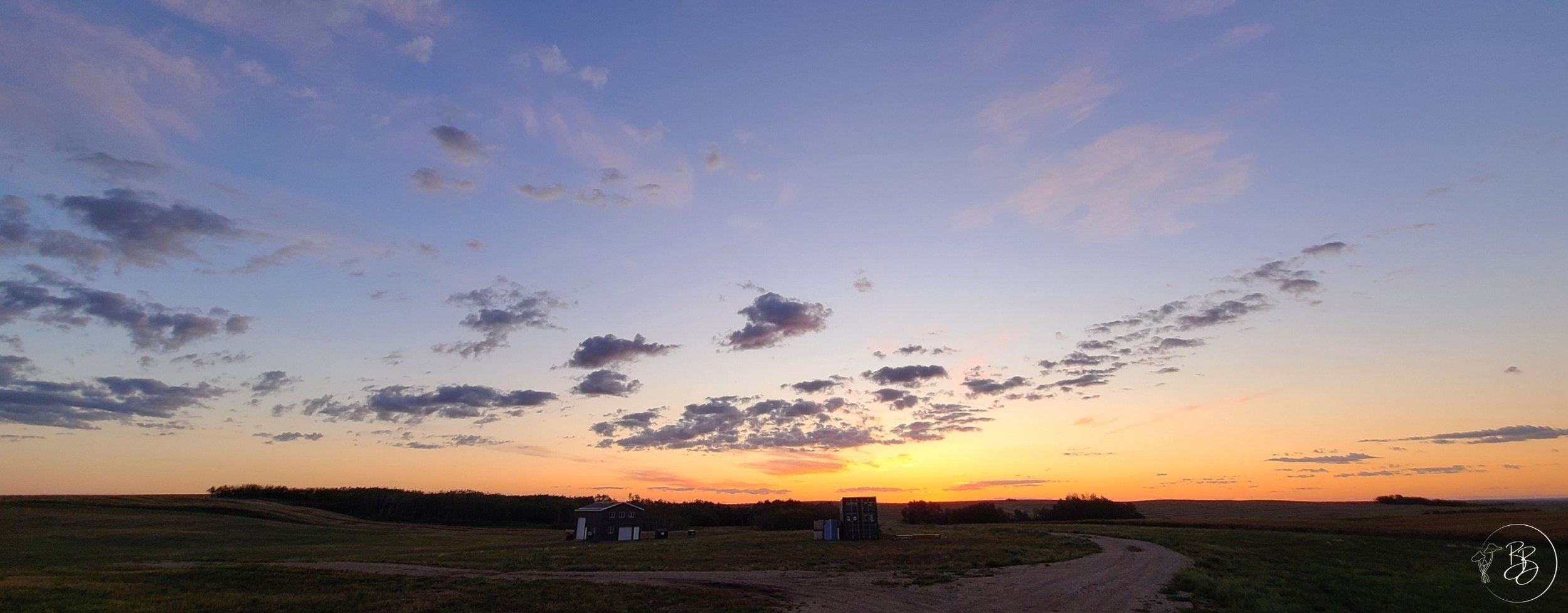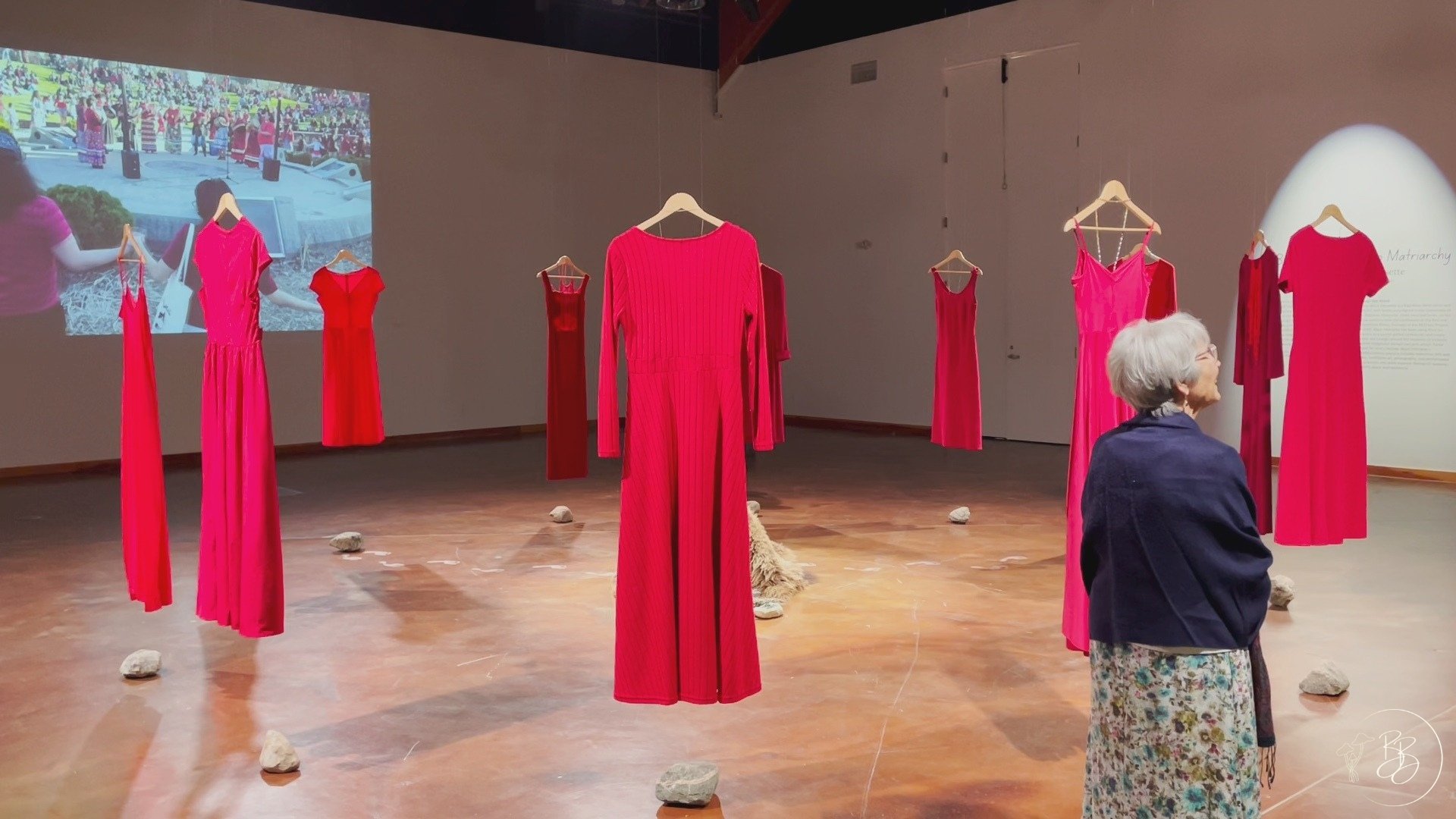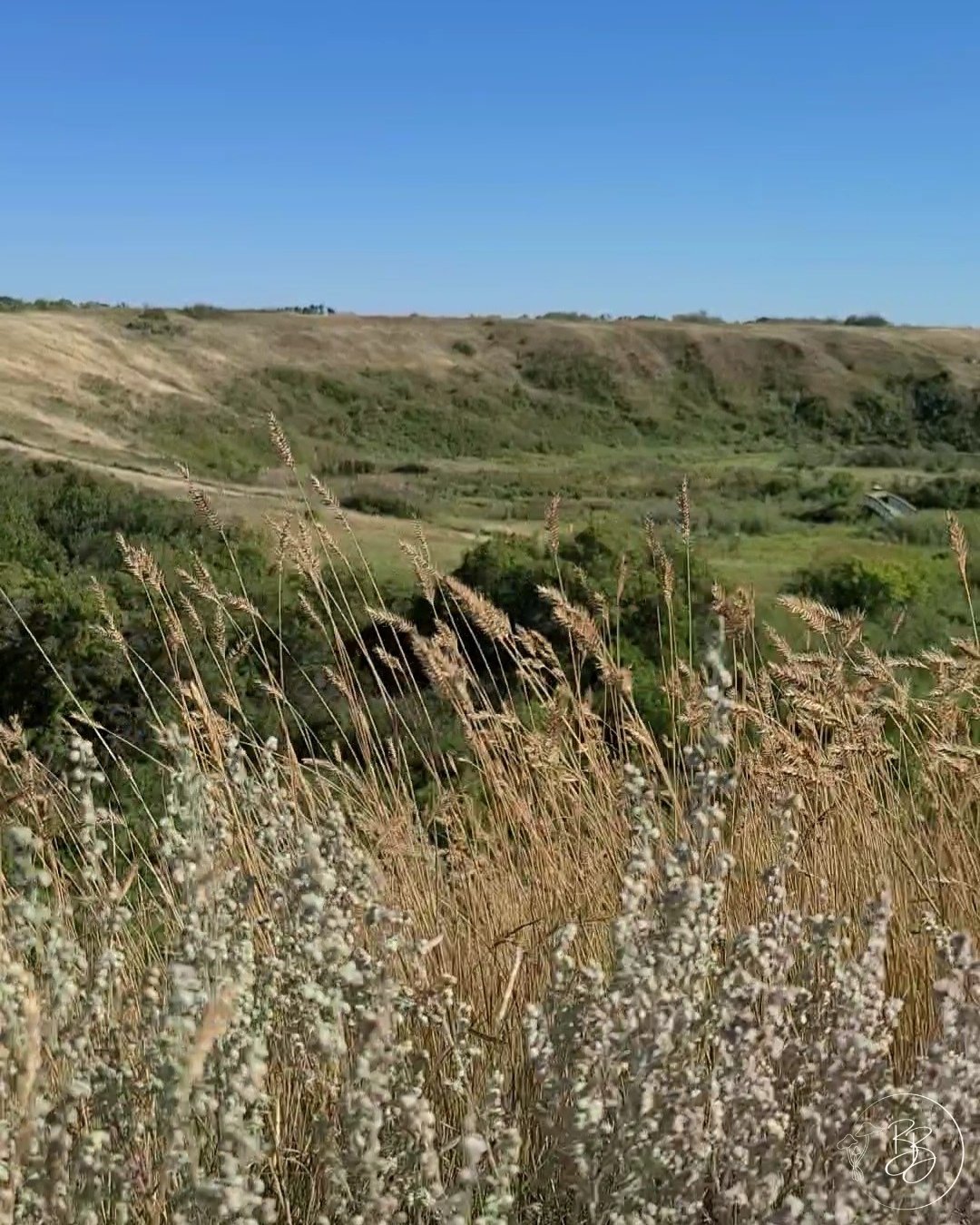Redberry Lake Biosphere Region
Traditional Territory of the Cree Peoples and the Métis Nation

Redberry Lake, named after the vibrant Buffalo Berry that grows along its shores, stands out for its naturally high salt levels, creating an ideal sanctuary for migratory birds. Nestled between the boreal forest to the north and framed by prairie grasslands and Aspen Parkland, the Redberry Lake Biosphere Region is a flourishing haven for diverse wildlife.
Statistics
Country: Canada
Province: Saskatchewan
Established: 2000
Geographical Features: Boreal Forest, Prairie Grassland, Saline and Freshwater Lakes, Aspen Parkland, Wetlands and Riparian Zones that support migratory birds
Best Time to Visit: During the Spring and Fall migrations (April to June and August to October)
How to Get There: Redberry Lake is a 60 min drive north of Saskatoon, Saskatchewan
Follow the Redberry Lake Biosphere on all the below social links!
A map of the Redberry Lake Biosphere Region
“Saskatchewan is renowned for having some of the most abundant and productive waterfowl habitat in North America.”
Biodiversity Conservation
Redberry Lake: A Sanctuary for Migratory Birds
In 1925, long before Redberry Lake was recognised as a UNESCO Biosphere Region, the Canadian Government designated Redberry Lake as a Migratory Bird Sanctuary, helping to protect the area as an important stopover for migratory birds, particularly waterfowl and shorebirds. In 1996, the region also received the designation of Important Bird Area (IBA) by Nature Canada, highlighting the area's significance for bird conservation and recognizing its vital role in providing habitat for a variety of bird species.
At Redberry Lake, the saline waters and surrounding habitats provide vital breeding grounds for species like the American White Pelican, which is classified as a species at risk. Additionally, this IBA supports other vulnerable species such as the Piping Plover and the Sprague’s Pipit, making it an indispensable site for avian biodiversity conservation.
The Redberry Lake Biosphere Region (RLBR) undertakes several hands-on initiatives to protect bird species within the IBA. They engage in data collection efforts, such as bird banding, which involves capturing and marking birds to track their movements and population trends. This is crucial for monitoring species at risk like the Piping Plover and the American White Pelican. Additionally, the region supports habitat restoration projects, including the planting of native vegetation, which helps create and maintain the essential habitats that birds depend on for breeding and migration.
You can get involved with bird banding too! The RLBR hosts bird banding workshops in the fall.
Mike Blom, RLBR’s field technician and birding specialist, holds a Swainson's Thrush during a bird banding tour
Rewilding Redberry Lake with Native Trees
In 2021, the Government of Canada officially launched its 2 Billion Trees (2BT) initiative, aiming to plant 2 billion trees by 2030 to combat climate change and biodiversity loss. These trees will contribute to capturing carbon, improving air and water quality, and restoring critical habitats. Two years into the program, over 110 million trees have already been planted at more than 2,900 sites, keeping the program on track to meet its ambitious targets.
The Redberry Lake Biosphere Region has set an ambitious target to support this national initiative: planting 50,000 trees this year, with plans to double that number to 100,000 next year, and potentially reach up to 200,000 annually. In pursuit of this goal, they established a nursery in Hafford, Saskatchewan. The nursery focuses on cultivating native trees, plants, and grasses for reforesting large tracts of land across the province. All seeds are collected from within the Biosphere Region, ensuring that the trees are well-suited to local conditions. The greenhouse, completed in the fall of 2023, began growing native deciduous trees, including Trembling Aspen, Balsam Poplar, Manitoba Maple, White Birch, Bur Oak, and Green Ash, with the first seedlings planted in the spring of 2024.
The nursery in Redberry Lake Biosphere
The RLBR have been engaging various landowners, including private individuals and NGOs, anyone interested in enhancing the biodiversity on their landscape. Success has been notable, with strong landowner engagement—this year, a private landowner is taking all 50,000 trees. The projects predominantly utilize previously productive farmland, contributing to habitat restoration and carbon sequestration while allowing homeowners to enhance biodiversity on their properties and support local wildlife.
Read more about this project on the Redberry Lake Biosphere website.
Regenerative Tourism
Contribute to Citizen Science
with iNaturalist
Get involved in citizen science and explore nature in a whole new way with iNaturalist! The app lets you record and share your observations of plants, animals, and fungi, contributing to global biodiversity research. Every photo you upload helps scientists track species and monitor ecosystems. It's a fun, interactive way to volunteer for conservation efforts while discovering the natural world around you.
Some of the species we’ve seen in the Redberry Lake Biosphere include: Silver Buffaloberry, Canada Goldenrod, Panicled Aster, White Heath Aster, and Fringed Sagebrush.
Follow Biosphere Bathing on iNaturalist to get live updates on species we see in Biosphere Regions across Canada.
The iconic buffaloberry
Bird Banding in Redberry
with the Redberry Lake Biosphere Region
The Redberry Lake Biosphere Region is designated as an Important Bird Area (IBA) by Nature Canada, highlighting the area's significance for bird conservation and recognizing its vital role in providing habitat for a variety of bird species.
At the RLBR’s new interpretive centre, they are offering bird banding experiences - a unique, hands-on opportunity to engage with conservation efforts directly. Participants work alongside experts to capture, band, and release birds, gaining insight into the vital process of tracking bird populations and studying their behaviors. This experience not only provides a up-close encounter with species like the Northern Saw-whet Owl and various songbirds but also contributes to the scientific data needed to protect these birds and their habitats.
Read more about the experience on the RLBR website and make sure you try this once in a lifetime experience when you’re in the Redberry Lake Biosphere!
Upcoming Events and Volunteer Opportunities
Outdoor Recreation
Bike the Trans Canada Trail
You can cycle 126 km through the heart of the Redberry Lake Biosphere Region from West to East along the Trans Canada Trail (TCT). This scenic route follows quiet dirt highways, winding through farmland, tranquil small lakes, and stands of Aspen Parkland. Saskatchewan's famously flat terrain makes for an easy ride, with vast stretches of golden fields and endless horizons providing a peaceful and uninterrupted journey.
The Trans Canada Trail, also known as The Great Trail, is the longest recreational trail in the world, connecting every province and territory in Canada. Stretching over 28,000 km, it offers a wide variety of landscapes, from urban pathways to wilderness routes. In the Redberry Lake Biosphere Region, the trail is perfect for taking in the sweeping prairie landscapes, making it a must for outdoor enthusiasts. You can take any form of human-powered transport along the trail, from hiking, biking and paddling to cross-country skiing and snowshoeing. With the dirt roads, biking was ideal for efficiently covering more ground while soaking in the serene landscape.
Biking the Trans Canada Trail
If you want to learn more about the Trans Canada Trail, head to the TCT website. We also highly recommend watching the awe-inspiring documentary “500 days in the wild” by Dianne Whelan which showcases her 6 year journey traversing the TCT.
Hike the Discovery Trail along the shores of Redberry Lake
Known only to locals, you won't see many others on this trail. A gorgeous out and back route that winds past Buffalo Berry bushes (those red berries the lake is named after), goldenrods, white asters, fringed sagebrush, and many more native species. This trail begins at the Redberry Lake parking lot and passes through an RV park. Once through the RV park the trail meanders up to a viewing point where you have stunning views of the entire lake. The lake itself is a migratory bird sanctuary so keep an eye (or ear) out! The trail is quite overgrown toward the end but if you continue along this route you will make it to a private beach area where you can soak in the expansive views of Redberry Lake.
You can find this trail on AllTrails as the Discovery Trail in Hafford.
Looking out at Redberry Lake
Please note, there is a fee to enter Redberry Lake Provincial Park, it was $11 for a day pass in the Summer of 2024. Read more about this on the Saskatchewan Parks website.
Birdwatching in a Migratory Bird Sanctuary
Redberry Lake in Saskatchewan is recognized as an Important Bird Area (IBA), making it an exceptional destination for birdwatching. The biosphere, the only one in Saskatchewan, is home to a wide variety of bird species, including both migratory and resident birds. Birdwatchers can spot over 100 different species, making it a prime location for birding enthusiasts.
The lake and surrounding habitats, including grasslands, wetlands, and woodlands, provide crucial environments for many species at risk, such as the Northern Saw-whet Owl and various seasonal songbirds. Make sure you download the Merlin App before you go so you can capture bird songs in real time and instantly identify the species!
To read more about the types of birds you could see in the Redberry Lake Biosphere Region - check out our blog post “Birdlife of Redberry”. The blog showcases incredible images taken by Mike Blom, the field technician and birding specialist for the RLBR.
Mike Blom releases a Swainson’s Thrush back into the wild
Paddle on the tranquil Redberry Lake
Redberry Lake is a peaceful haven for stand-up paddleboarding, offering a tranquil escape amidst stunning natural beauty. The calm waters create an ideal environment for leisurely paddling, making it a perfect opportunity to try stand-up paddleboard yoga if you’re up for a unique experience.
For a truly serene setting, seek out the inlet tucked behind the boat launch. This hidden spot provides a quiet refuge away from the main beach area and the winds, allowing you to fully immerse yourself in the soothing surroundings. To reach this peaceful inlet, turn left as you enter the main parking lot, drive through the RV park, and follow the winding road around to the right until you arrive at the headland.
Redberry Lake is unique for its high salinity levels, which are among the highest in Canada, so be mindful of this if you plan to dive in it will be salty!
Stand-up Paddleboarding in Redberry Lake
Please note, there is a fee to enter Redberry Lake Provincial Park, it was $11 for a day pass in the Summer of 2024. Read more about this on the Saskatchewan Parks website.
Wanuskewin Cultural Experience
Although not technically within the Biosphere boundaries, Wanuskewin is an unmissable cultural experience located just outside of Saskatoon. This remarkable site has served as a gathering place for every Nation of the Northern Plains for thousands of years, making it a significant part of Indigenous heritage and history.
Today, Wanuskewin is a Heritage Park dedicated to preserving the rich cultural traditions, sacred archaeological sites, and invaluable knowledge of Indigenous peoples. It offers visitors profound insights into their enduring connection to the land, as well as the history of the region. As you explore the park, you’ll encounter stunning displays of Indigenous art that reflect the vibrant creativity and cultural expressions of the communities.
In addition to the art, you can witness traditional hoop dances, which are not only visually captivating but also deeply rooted in storytelling and spiritual significance. The park is also home to a herd of bison, which roam the land much like they did in centuries past, providing a powerful connection to the natural world and its history.
With its rich programming, interactive exhibits, and stunning landscapes, Wanuskewin invites you to engage with Indigenous culture in a meaningful way, making it an essential stop for anyone seeking to understand the heritage and traditions of the Northern Plains. Whether you're wandering the trails, participating in workshops, or simply soaking in the breathtaking scenery, Wanuskewin offers a unique and enriching experience that should not be missed.

‘Breadroots; Paths to Matriarchy’ by Jaime Black-Morsette

Exploring the trails around Wanuskewin Heritage Park

Art displays at Wanuskewin Heritage Park

A traditional hoop dance at Wanuskewin Heritage Park

Art displays at Wanuskewin Heritage Park

Sagebrush

Art displays at Wanuskewin Heritage Park

Art displays at Wanuskewin Heritage Park
Visit the Crooked Bush and Saskatchewan’s biggest Tree
Known affectionately as the Crooked Bush and the Big Tree, explorers have to make the trek out to see these 2 incredible landmarks.
The Crooked Bush in Saskatchewan is a mysterious grove of aspen trees that grow in a twisted, spiraled fashion, defying the typical straight growth pattern and creating a surreal, otherworldly landscape. The trail itself is short and rundown but still definitely worth a visit, the eerie feeling you get when standing amongst these tormented trees is next level!
The Crooked Bush
Saskatchewan’s biggest tree, a towering Plains Cottonwood estimated to be around 160 years old, stands as a remarkable natural giant, with an immense canopy and a trunk circumference that has made it a living landmark in the province. Located down by the Saskatchewan River, seeing this beautiful giant in real life is a must-see. Different from the giant Douglas Firs and Red Cedars you see in other provinces, the Cottonwood is known for its deeply furrowed bark and its massive, spreading branches that create a majestic canopy, offering shelter to wildlife and shade to those who visit this prairie giant.
Saskatchewan’s Biggest Tree
Discover a new way to explore
Make a meaningful contribution next time you travel by participating in local volunteer activities such as:
Documenting species in iNaturalist
Bird Banding with the Redberry Lake Biosphere Region
Volunteering with other non-profit organisations such as Nature Saskatchewan or Ducks Unlimited
Can’t travel right now but still want to contribute? Consider donating to any of the above organisations to support their ongoing work!
We hope you feel inspired to visit the Redberry Lake Biosphere!
Already been to the Redberry Lake Biosphere? Tag us in your photos @biospherebathing for a chance to be featured!



















The Redberry Lake Biosphere Region is a stunning blend of prairie grasslands, aspen parkland, and boreal forest, interspersed with saline and freshwater lakes. This unique mix of ecosystems creates a rich tapestry of life, from migratory birds to resilient plants thriving in these varied habitats. This blog post is a compilation of wildflowers, berries, and grasses you can see in the Redberry Lake Biosphere Region in the Summer.